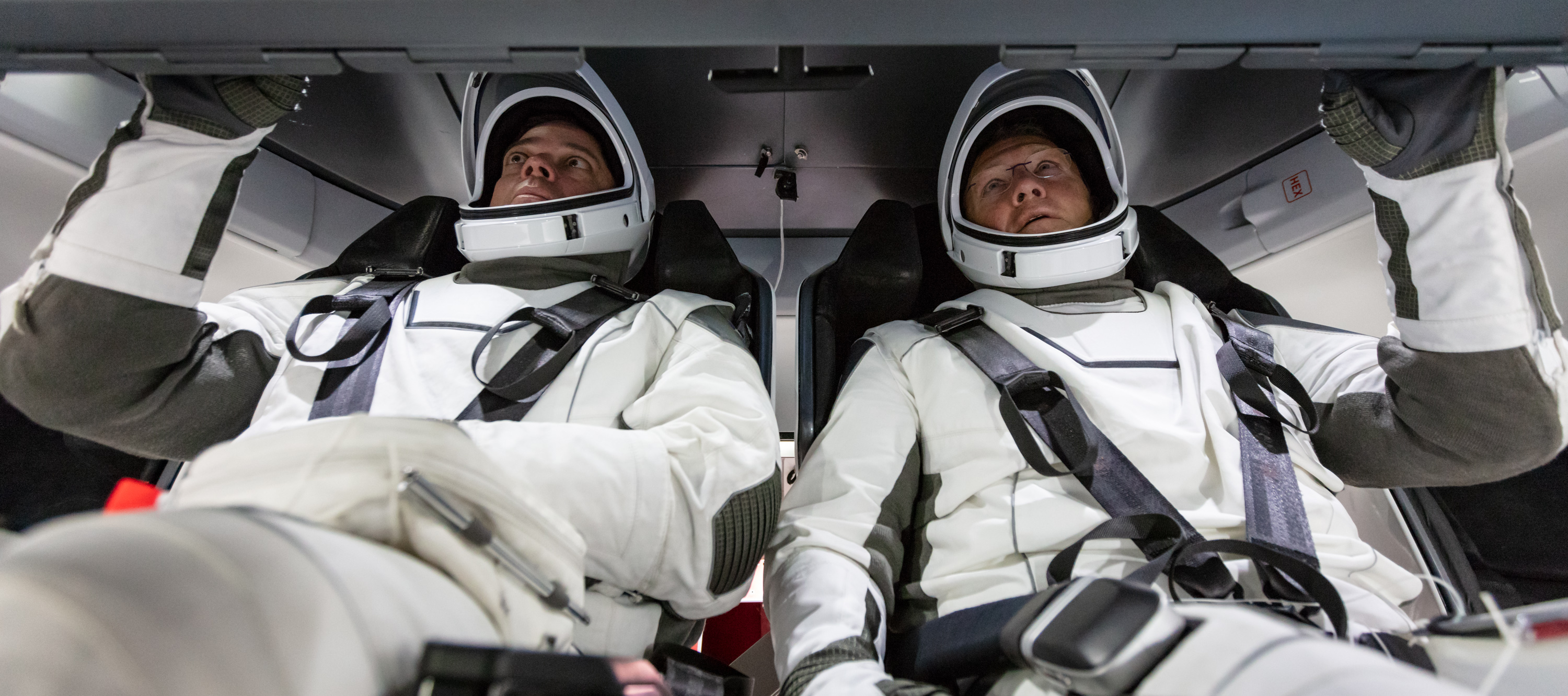SpaceX on target for milestone May 27 crew launch, safety panel says

SpaceX remains on track to launch astronauts next month despite a few remaining issues, members of a NASA advisory panel said Thursday (April 23).
Elon Musk's company and NASA are working toward a May 27 launch date for Demo-2, which will send agency astronauts Doug Hurley and Bob Behnken to and from the International Space Station (ISS) aboard a Crew Dragon capsule. And that target seems reasonable, according to members of the Aerospace Safety Advisory Panel (ASAP).
"We are aware of a few technical items that remain to be more fully understood before the event occurs, but the path forward appears feasible," ASAP Chair Patricia Sanders said Thursday during a public (though phone-only) meeting of the panel, which reports to both NASA and Congress.
Related: How SpaceX's Crew Dragon space capsule works (infographic)
Though Sanders didn't identify the technical items, she may have been referring to outstanding work related to Crew Dragon's parachute system and SpaceX's Falcon 9 rocket, which will launch Demo-2. SpaceX has aced a series of trials recently with the capsule's revamped chute design, but the company still has a drop test on the docket for early May.
And one of the nine Merlin engines that power the Falcon 9's first stage suffered a failure during a March launch of 60 SpaceX Starlink internet satellites. Though the anomaly did not unduly affect that mission — the Falcon 9 is designed to overcome such issues — NASA officials have said they want an investigation into the incident completed before Demo-2 lifts off.
SpaceX is flying Demo-2 under a $2.6 billion contract the company signed with NASA's Commercial Crew Program in 2014. That deal also covers six operational missions to and from the ISS, which SpaceX can begin flying after Demo-2 wraps up.
Breaking space news, the latest updates on rocket launches, skywatching events and more!
The upcoming mission will be the first orbital human spaceflight to launch from American soil since NASA's space shuttle fleet retired in 2011. But it won't be the first visit to the orbiting lab for a Crew Dragon: SpaceX flew an uncrewed mission called Demo-1 to the ISS in March 2019.
Boeing also holds a NASA commercial crew deal, which the aerospace giant will fulfill using a capsule called the CST-100 Starliner. But Boeing has considerable work to do before Starliner is ready to fly astronauts, ASAP team members said Thursday.
Starliner's version of Demo-1, called Orbital Flight Test (OFT), didn't go according to plan. During the test flight, which launched in December 2019, the capsule suffered several software issues and ended up getting stranded in the wrong orbit. Starliner was not able to meet up with the ISS and came back down to Earth just two days into a planned eight-day mission.
If astronauts had been aboard the flight, they would have remained safe, and may have been able to troubleshoot the software glitches, Boeing representatives have said. Nevertheless, the company announced earlier this month that it would fly another iteration of OFT before proceeding to a crewed test flight.
That was the right decision, ASAP members said.
"But we also caution that this is not sufficient to address the concerns that have arisen following the OFT, and we continue to strongly advise NASA to ensure that the underlying technical and organizational or cultural shortcomings uncovered during the investigation of the mishap and in subsequent reviews are fully addressed and mitigated before any attempt to launch astronauts on the vehicle," Sanders said.
The ASAP advises NASA on safety issues and evaluates the agency's performance in this area. The panel was created in the wake of the 1967 Apollo 1 fire, which killed NASA astronauts Gus Grissom, Ed White and Roger Chaffee.
ASAP public meetings are held quarterly. However, scheduling issues and challenges imposed by the coronavirus pandemic prevented panel members from talking to everyone they wanted to ahead of Thursday's event, Sanders said. So, there will be another ASAP public meeting — technically, Part 2 of this most recent one — in early May.
- In photos: SpaceX's amazing Crew Dragon in-flight abort test launch
- SpaceX Crew Dragon arrives at launch site for historic Demo-2 flight
- How Boeing's Starliner orbital flight test works: A step-by-step guide
Mike Wall is the author of "Out There" (Grand Central Publishing, 2018; illustrated by Karl Tate), a book about the search for alien life. Follow him on Twitter @michaeldwall. Follow us on Twitter @Spacedotcom or Facebook.
OFFER: Save 45% on 'All About Space' 'How it Works' and 'All About History'!
For a limited time, you can take out a digital subscription to any of our best-selling science magazines for just $2.38 per month, or 45% off the standard price for the first three months.

Michael Wall is a Senior Space Writer with Space.com and joined the team in 2010. He primarily covers exoplanets, spaceflight and military space, but has been known to dabble in the space art beat. His book about the search for alien life, "Out There," was published on Nov. 13, 2018. Before becoming a science writer, Michael worked as a herpetologist and wildlife biologist. He has a Ph.D. in evolutionary biology from the University of Sydney, Australia, a bachelor's degree from the University of Arizona, and a graduate certificate in science writing from the University of California, Santa Cruz. To find out what his latest project is, you can follow Michael on Twitter.

